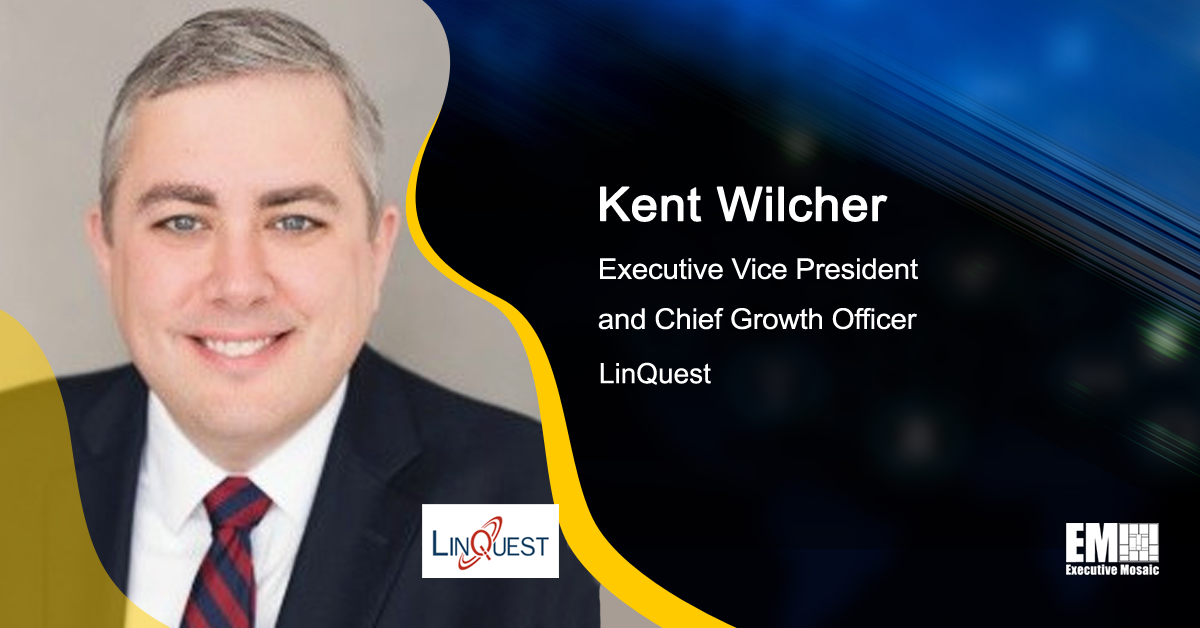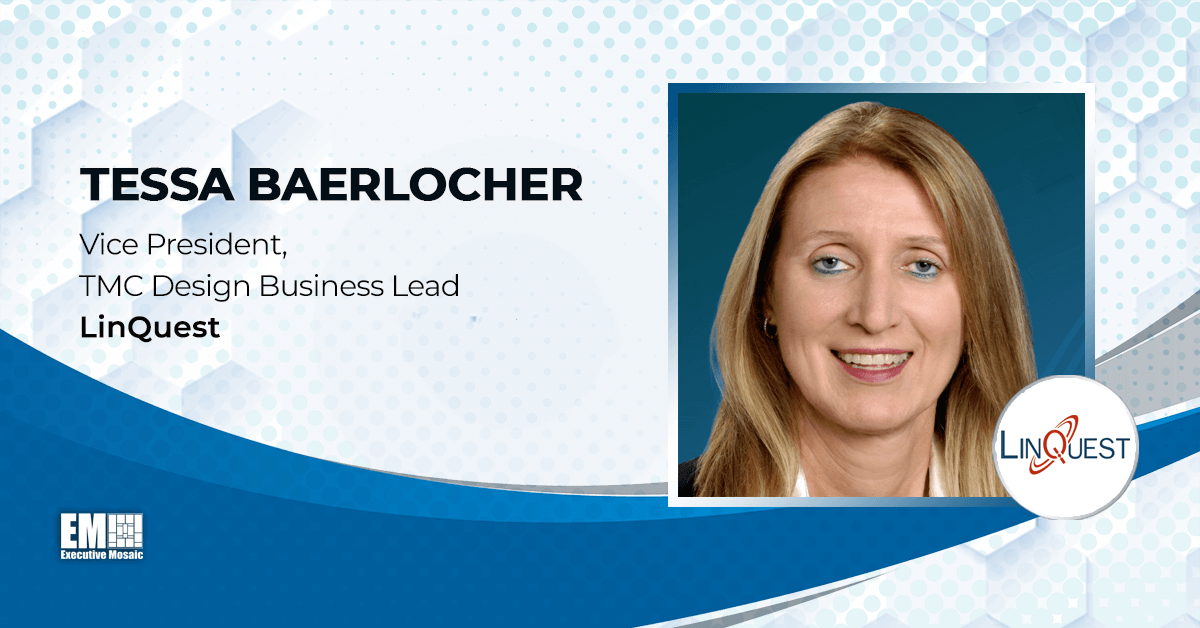Coming out of his undergraduate work in chemical engineering at the University of Tennessee, Kent Wilcher considered three industries: oil and gas, pharmaceuticals and defense. After some brief deliberation, his answer was fairly easy. He decided to serve the defense industry because of his belief in its mission—he wanted something highly technical that also had a consequential impact. Wilcher started at Jacobs as a project manager and a test engineer nearly two decades ago, troubleshooting jet engines, rocket motors and hypersonic vehicles. This positioned him to be at the forefront of cutting edge work with weapon systems early in his career.
Early on in his 16-year tenure at Jacobs, Wilcher was also in charge of a small seller-doer organization, where he began to learn about growth and the nurturing of business practices. The executive subsequently transitioned into a focus on business, eventually ascending the ranks to positions such as vice president of growth and sales and vice president of capture, solutions and strategy. In 2021, he came aboard solutions-driven organization LinQuest as executive vice president and chief growth officer.
Wilcher recently sat down with GovCon Wire to explore how LinQuest is keeping pace with the breakneck speed of the Department of Defense’s most pressing national security problems, the improvements in the U.S. government’s handling of acquisition and more.
What can you tell us about the company’s recent growth initiatives and how you’re driving value for your customers through contract awards, acquisitions and other aspects across the federal sector?
When I think about growth initiatives, acquisitions, etc., there are three factors for LinQuest.
First, we want to focus our investments for growth in areas where they’re going to have the biggest positive impact on our national security. That’s really important to the entire LinQuest team.
For us, those areas are national security and space. Our heritage as a company is in those markets, which are priorities for the DOD and the IC. We’re focused on the impact we can have in the space market, focused on Air Force autonomy and the things going on with autonomous weapons systems, as well as assured position navigation and timing and, more broadly, the application of artificial intelligence and machine learning to a variety of decision support applications across the Department of Defense. We try to focus our energies around growth initiatives and acquisitions on where they’re going to have the most impact and where the priority areas are for the DOD.
Secondly, we aim to deepen our understanding of defense and national security customers, their missions and more specifically, the problems they need to solve. As we look to make investments, we’re starting with understanding the domain knowledge around a set of problems when considering investing in a solution.
Finally, we develop technical capabilities to meet challenges aligned with our customers’ priority missions. We talk a lot about first mover advantage at LinQuest. It’s one of our internal mantras. We’re looking to understand how we can leverage cutting edge technology to solve our customer’s hardest problems in their greatest priority areas.
We’ve made two acquisitions in the last few years: TMC Design, in 2021, expanded our support to the U.S. Army and other national security customers in priority areas like space, enabled cyber operations, space superiority, space control and electronic warfare, positioning us to address top national security priorities.
In 2019, we completed an acquisition of Perduco, deepening our AI/ML and analytics capabilities. We combined AI/ML and advanced algorithms, mission domain knowledge and pragmatic software development approaches and tools to build solutions that enable rapid decision making for the DOD.
What are the core values that are important to your company’s culture? How has your team developed its workflow and ability to drive success in such a competitive market?
I think the first and most obvious point has to be talent. We at LinQuest value the people that work in the company in a truly sincere way. We understand that the value we’re able to provide to our customers and their missions—it’s all due to our people. We have created a genuine culture where people feel valued, where they feel like the company leadership is sincerely placing our people and the impact on our nation’s national security and our customers’ missions ahead of everything else.
That leads to a longer-term perspective on business growth: it’s not about squeezing all of the dollars out of your current contract. It’s about really delivering value for the mission and recognizing that you’re going to then be rewarded with additional opportunities to grow over the long term.
The second thing I would call out is we have a lot of focus on speed and agility. For instance, the events in Ukraine and the rising threat from China requires intense focus on countering near-peer adversaries in areas where we have deep capability including national security space, autonomous weapons systems, and application of AI/ML to hard problems. We have to remain agile and quickly get to the right answers. This is an important value and part of our culture.
With federal agencies working to implement the latest trends in technology such as AI, 5G, cloud and many others, what are your thoughts on the success and challenges that government agencies are dealing with to stay ahead of innovation to establish the U.S. as THE global leader?
I’m a huge advocate of Secretary Kendall’s Operational Imperatives for the Department of the Air Force, which LinQuest aligns with.
His first Operational Imperative is space order of battle. This is all about developing new capabilities and approaches for the U.S. to protect our space assets and counter adversary capabilities.
LinQuest is at the forefront of this Operational Imperative as a first mover in the world of digital engineering and the application of digital tools to revolutionize the acquisition of complex, interoperable, highly networked space and defense systems. We are recognized by the DOD for the application of digital engineering to improve acquisition for these complex systems.
The Operational Imperative puts what we do in the digital engineering domain front and center as the top priority for the Department of the Air Force, including the Space Force.
The second Operational Imperative, Advanced Battle Management System, is a challenge of how to integrate many existing and new systems to enhance warfighting capabilities in an operational battlefield scenario. Our application of digital engineering modeling and simulation AI/ML tools addresses this problem.
In recent years, what are some of the biggest improvements you’ve seen in the way we talk and think about innovation across the federal sector since the rise of cybersecurity, AI/ML, 5G and other emerging technologies?
Acquisition has experienced huge improvements. There’s been a realization that if you want innovation and you want to quickly bring emerging technologies to tackle real problems and challenges for the United States, then you have to change the way you acquire.
Government leadership has embraced the idea that they have to do something different in the acquisition process to more quickly get capabilities
Additionally, we’re seeing efforts across the defense and national security enterprise to improve speed of acquisition, especially in these areas where there’s a need to modernize to support the warfighter.
Government leaders now immediately connect innovation to acquisition.
Another improvement is in acceptance of new technologies. Five years ago cutting edge technologies like cloud were met with reluctance from the government. But for perhaps five to 10 years they’ve been embracing these new technologies. The DOD and IC actively seek the cutting edge technologies that could provide an additional benefit.
There’s a willingness to accept and embrace commercial approaches stemming from recent successes. Cloud and SpaceX’s revolutionized launch illustrate new cutting edge approaches that offer huge value to the government.
Finally, government and industry leaders alike understand that it’s all about the talent. It’s all about creating an environment where your best and brightest STEM graduates want to come into this industry and bring cutting edge technologies. ringing forward cutting edge technology is a talent problem–and that’s an important fundamental concept to grasp if you’re trying to push new technology forward.






